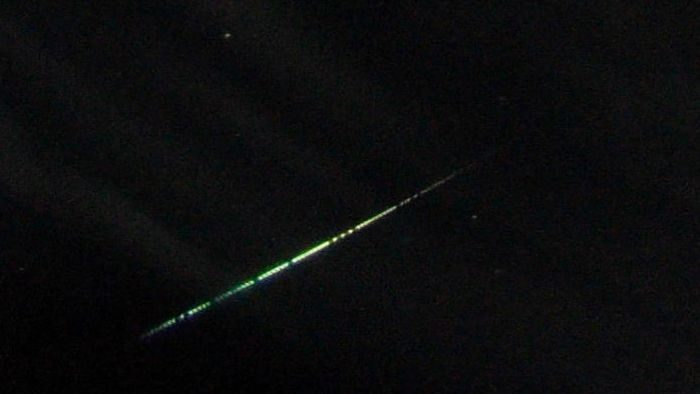
Dr Hadrien Devillepoix said the fireball — reported at 8:09pm local time, east of the Perth metropolitan area — would have been visible up to 500 kilometres from Perth in Geraldton, Kalgoorlie, and Albany.
The exact location cannot be determined because remnant cloud hindered DFN's cameras from being able to triangulate the asteroid.
"Not many people actually saw the fireball directly," Dr Devillepoix said.
"We got it on one camera — all the way down in Katanning in the Wheatbelt."
Despite the lack of visual reports, Dr Devillepoix said a sonic boom would have been heard up to 50 kilometres away from the fireball's location.
"Sonic booms are quite common for rocks that make it quite deep in the atmosphere," he said.
"They pack a big punch and create a kind of shockwave. That's what people hear."
Potential delight for bushwalkers
After a cold and wet end to the weekend, Chidlow residents Tony Ettridge and his family were settling down to watch Sunday night television when the boom sounded.
"We thought, jokingly, 'someone's meth lab just blew up'," Mr Ettridge said.
"It just sounded like something was blowing up, more than a sonic boom or anything.
"It was loud enough for us to sit, look at each other, and look outside to see what it was."
Due to stormy weather over Western Australia's south, Mr Ettridge said his family could not see anything from his window so his daughter took to social media for answers.
"All of a sudden there were people popping up everywhere from places that heard it earlier, places like York and further down the hills towards Perth," he said.
"It must have been pretty big."
The fireball is expected to have travelled at about 10-20 kilometres per second and would have landed somewhere east of Perth.
Dr Devillepoix could not be certain exactly where the asteroid ended up, but said keen bushwalkers might be lucky enough to stumble upon it.
"You'd have to get pretty lucky [to find it] ... but sometimes people just randomly find them bushwalking," he said.
"What you'd see is a black rock with a dark, fusion crust [of a glassy appearance] around it. But it wouldn't be hot, contrary to popular belief."
If you saw the fireball on Sunday November 1, report the details at the Global Fireball Observatory website.



Reader Comments
to our Newsletter